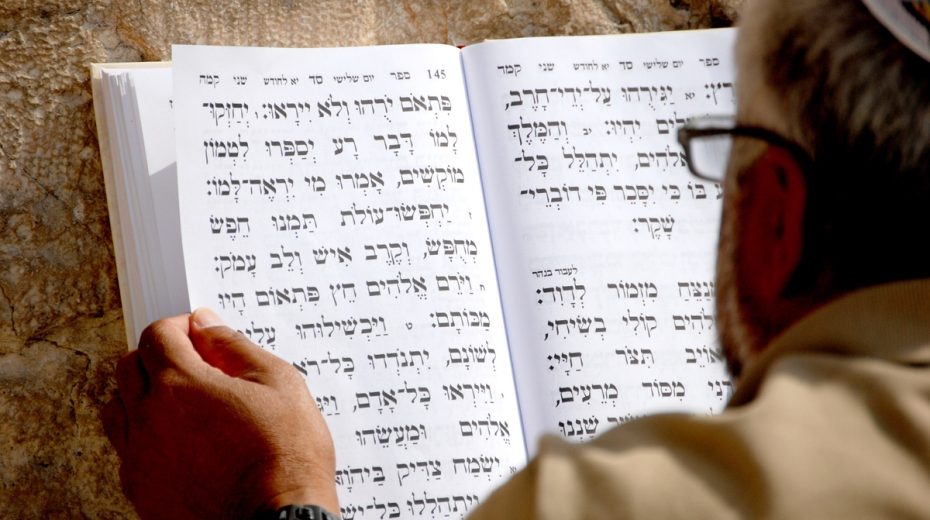British author Adam Jacot de Boinod spent five years researching over 700 dictionaries of different languages, culminating in a book titled, The Meaning of Tingo and Other Extraordinary Words from Around the World.
Boinod’s findings suggest that a nation’s dictionary says more about its culture than a guidebook.
Indeed, you can tell a lot about a people by analyzing the prevalence and prominence of certain words in their language.
For example, Hawaiians have 65 words to describe fishing nets, 108 words for sweet potato, 42 for sugarcane and 47 for bananas, all staples of a Hawaiian diet.
Notably, in the same way that the Inuit have many words to describe the subtle differences between different types of snow, the Talmud employs a wide range of words to describe different categories of inquiry, reflecting the centrality of asking questions in Jewish culture and tradition.
This brings us to a question debated over millennia: Does the language we use merely express our worldview and values, or does it shape them?
Do the words we use merely convey our thoughts and emotions, or do they influence the way we think and feel?
As a growing body of research suggests, language does more than communicate our perception of reality, it creates it.
According to Professor Lera Boroditzky, a cognitive scientist who specializes in the fields of language and cognition: “It turns out that if you change how people talk, that changes how they think. If people learn another language, they inadvertently also learn a new way of looking at the world.”
In the words of Charlemagne: “To have a second language is to have a second soul.”
Boroditzky offers numerous examples to showcase just how vital a role language plays in shaping the way we interface with the world around us.
For instance, the language Pormpuraaw, spoken by a remote aboriginal community in Australia, has no words for “left” or “right.”
Instead, indigenous Australians speak only in terms of cardinal directions—north, south, east and west.
If one wants to tell a friend that they have an ant on their pants, one would say something like, “There’s an ant on your southwest leg.”
“Hello” in Pormpuraaw translates more accurately as, “Which direction are you going?”
If you don’t know which way is which, you may find yourself stuck, both conversationally and physically.
Ultimately, the patterns and words used in each language not only offer a window into a culture’s sensibilities and priorities, they help shape them as well.
Hence the title of a book I recently co-authored: People of the Word: 50 Words that Shaped Jewish Thinking, which provides insight into 50 key Hebrew words and the big ideas embedded in their etymology. These words have helped shape Jewish thought and values. In many instances, they have led to measurable real-world impact.
For example, one could argue that the emphasis on happiness and joy in the Hebrew language and Jewish tradition, as elucidated in the chapter “Happiness,” has contributed to the fact that, according to the Gallup-Health-ways Well Being Index, Jews score the highest of any faith or non-faith group in the US when it comes to happiness and wellbeing.
One could also posit, as did Nobel Prize winner Robert Aumann during a conversation I had with him while researching the book, that the great emphasis in Jewish tradition and culture on scholarship, curiosity and critical thinking has led to Jews’ disproportionate representation among Nobel Prize winners.
Another example of the link between the Jewish way of thinking and Jewish behavior can be seen in the Hebrew word tzedakah, often mistranslated as “charity.”
See related: Hebrew: Israel’s Secret Weapon
The great writer Salman Rushdie once said, “A culture can be defined by its untranslatable words.”
This is of particular relevance when we think about the word/concept of tzedakah, which has much to teach about the unique Jewish understanding and culture of giving.
To quote Rabbi Lord Jonathan Sacks, of blessed memory, “The Hebrew word tzedakah is untranslatable because it means both charity and justice. Those two words repel one another in English because if I give you £100 because I owe you £100, that’s justice. But if I give you £100 because I think you need £100, that’s charity.”
“It’s either one or the other, but not both,” he explained. “Whereas in Hebrew, tzedakah means both justice and charity. There’s no word for just charity in Hebrew. Giving is something you have to do.”
Author Paul Valley spent six years researching the history of Western philanthropy from the ancient Greeks and Hebrews to modern times. In his book Philanthropy: from Aristotle to Zuckerberg, he wrote, “It is, therefore, perhaps no coincidence that throughout the history of philanthropy Jews have been consistently generous givers, and disproportionately so.”
“A survey in Britain in 2019 showed that 93 percent of British Jews gave to charity compared with 57 percent of the rest of the population,” he noted. “In the Sunday Times Giving List in 2014, more than 12 percent of the most charitable givers were Jewish, though Jews constitute less than half of one percent of the UK population according to the last census.”
The point of the above examples and observations is not to suggest that Jews are naturally happier, smarter and kinder than other people, but rather that Jewish culture, as shaped and molded over millennia by Jewish ideas and values expressed in the Hebrew language, provides a universal paradigm-shifting toolkit and template that can be emulated by all.
More than merely a thought-provoking read, my co-author and I hope that our book, like the 50 words upon which it is based, will inspire readers to concrete action that reflects their highest ideals and values.
















Shalom IT,
I, for one, absolutely love these segments you do on Ivrit, would also love to see you do a daily Ivrit teaching, and or words that readers could study, would be great if you could….
Toda Raba IT!!!
In English “peace” means freedom from war, absence of anxiety, calm, quietness and harmony between people. Whereas “shalom” means more than these things and includes a desire to secure the well-being of another. One definition says: Shalom – peace, tranquillity, safety, well-being, welfare, health, contentment, success, comfort, wholeness and integrity. Jesus told us to let our shalom remain on a household that welcomed us but to take it back from those that rejected us. (Matt 10:13). Shalom Alechim – peace be upon you, is commended in Luke 10:5. Jesus used this term when he greeted the disciples after his resurrection. (John 20:19) Genesis 1:1 suggests God created the Hebrew aleph-bet as the first and last letters of the Hebrew alphabet, “Aleph-Tav”, are written even before the heavens are announced. Hebrew helps the student understand God and his word better.